One of my favourite things about driving across Canada is the ability to visit and sleep in some of the magnificent and diverse parks that Canada has to offer. While we are fortunate to have parks accessible in our cities, there are so many others that you need your own transportation to get to (unless of course you sign up for a tour). Grasslands National Park near Val Marie, Saskatchewan, bordering on the US State of Montana is one such park.
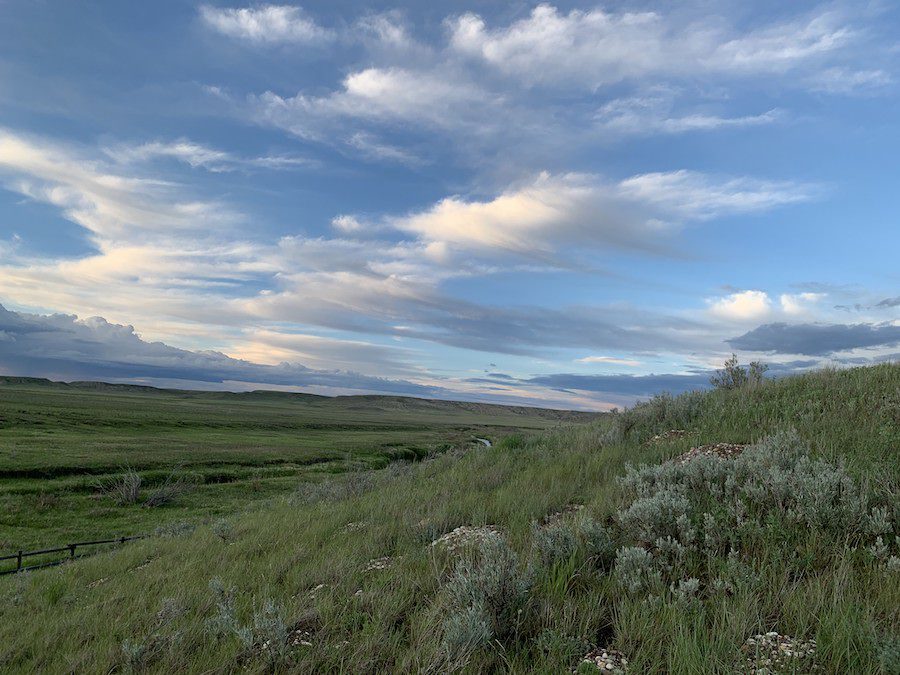
I first encountered Grasslands National Park as I mapped out a route and possible parks stops for a cross Canada road trip in 2019, and was entranced by the idea of sleeping under the stars in a Dark Sky Preserve, which Grasslands National Park is. And that’s just the teaser as to what this park holds with bison herds, dinosaur fossils, and an extinction boundary! This was my kind of place!
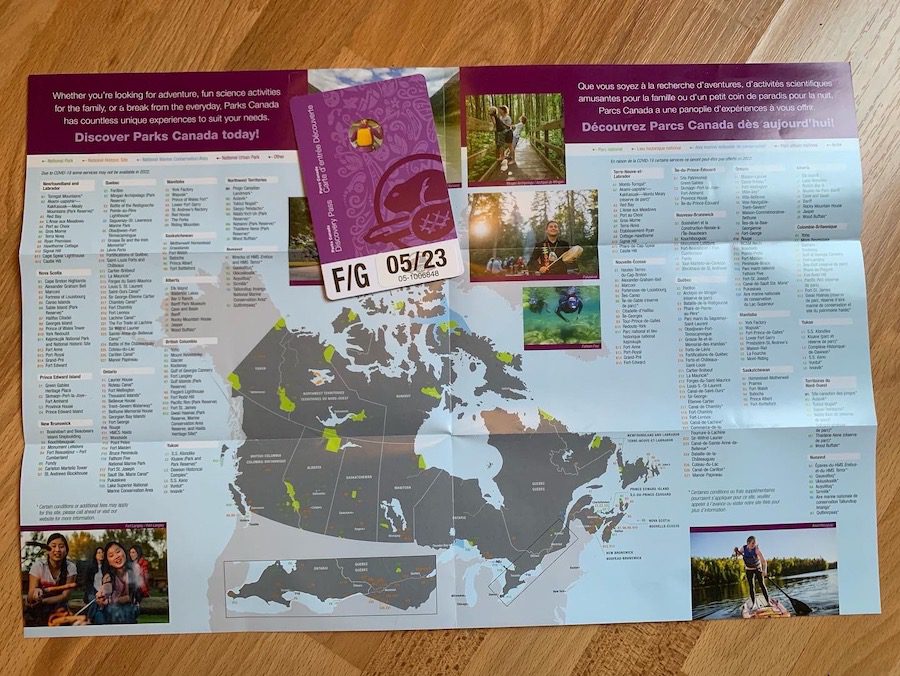
Unfortunately on that 2019 Cross Canada Road Trip it was not to be, between learning not to follow Google Maps through rural Alberta and Saskatchewan, several days of torrential down pours that washed away any hopes of seeing that incredible night sky, and a date by which I needed to arrive in Ontario, preventing me from attempting to outlast the rains. It didn’t stop me from dreaming about a magical night under the stars in Grasslands National Park though, so when I set out on my road trip across Canada in the Spring of 2022, Grasslands was my main must stop destination on the road trip. It certainly was worth the trip, although not nearly long enough of a stay. We will be returning for future visits.
Our Experience in Grasslands National Park’s West Block
First Impressions of Grasslands National Park’s West Block
Moments after we drove into the park, I noticed a car pulled over. As there was nothing but Prairies to see for miles, I pulled up to see if they needed help. That’s when I noticed them … PRAIRIE DOGS!!! … and not only prairie dogs but BABY PRAIRIE DOGS!!!
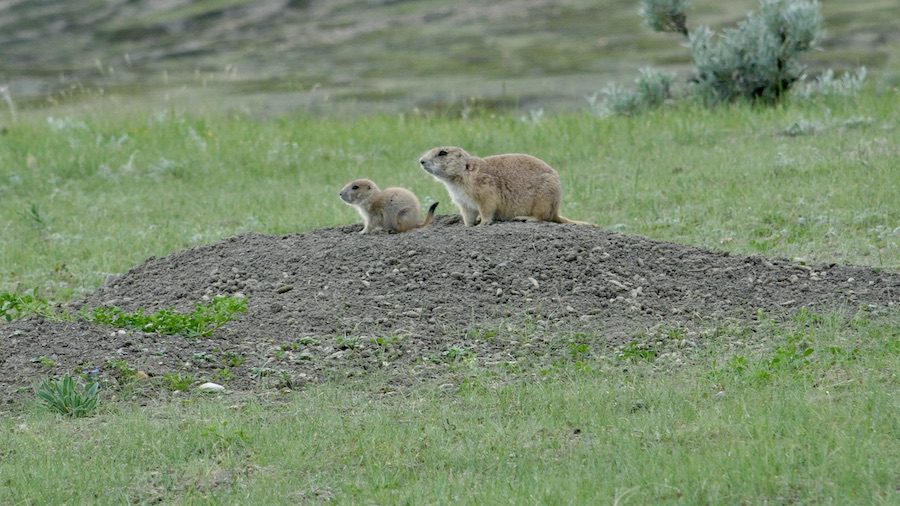
Soon I too was pulled over snapping photos, shooting video, enjoying the tranquility and chuckling at the antics of the prairie dogs.
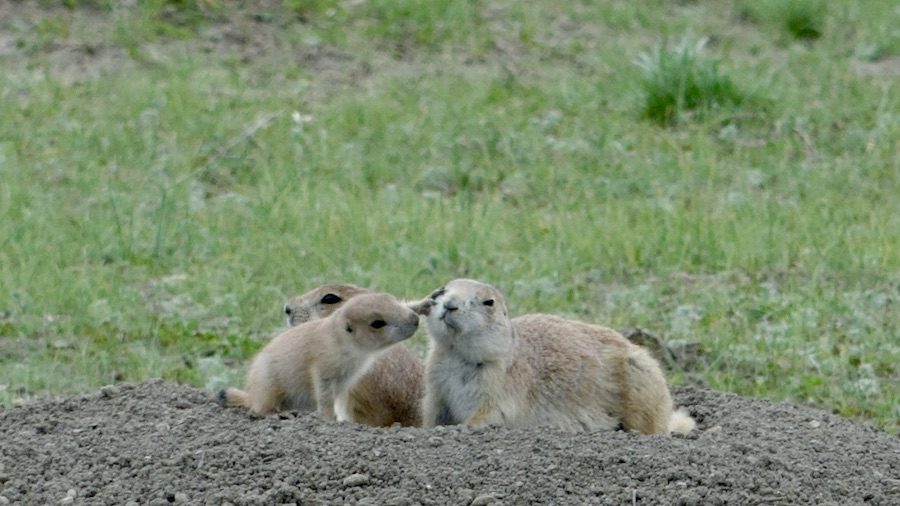
Black-Tailed Prairie Dogs
The West Block of Grasslands National Park and neighbouring lands are the only places in Canada where Black-tailed Prairie Dogs (Cynomys ludovicianus) exist in their natural habitat. This is the Northern edge of their range, which extends as far South as Chihuahua, Mexico. Black-tailed Prairie Dogs are easily distinguished from their cousins the Richardson’s Ground Squirrel or common gopher, as they are twice their size, getting up to 40cm / 16″ long and weighing as much as 0.5 to 1.5kg / 1 to 3 lbs, and are pale cinnamon buff in colour with a white underside and a black tipped tail. It wasn’t until 1927 that the first colonies of Black-tailed Prairie Dogs were discovered in Canada.
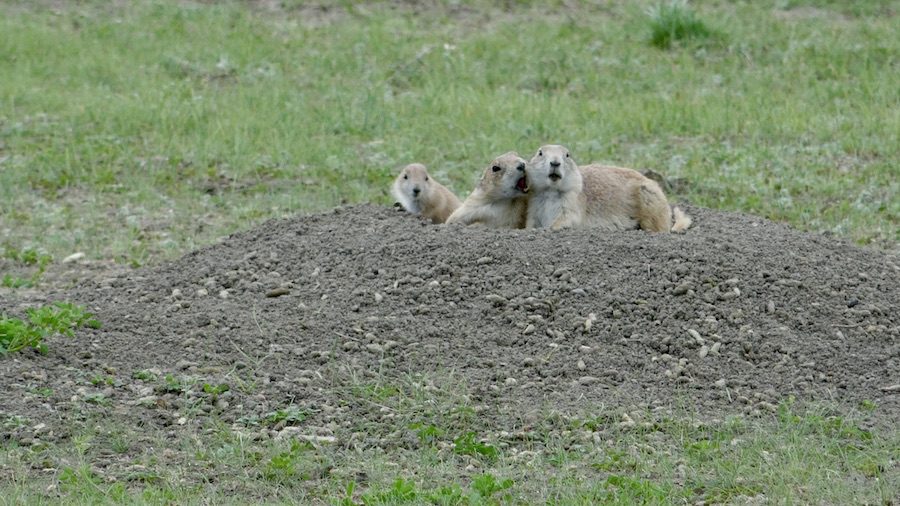
These highly engaging and rather adorable rodents (specifically a member of the squirrel family – Sciuridae) are diurnal, meaning that they are active during daylight hours. A typical day for a prairie dog involves spending the first two hours after sunrise foraging and eating, and the remainder of the day grooming, dust bathing, stretching, socializing and repairing their burrows. Prairie dogs are omnivores with their main diet consisting of grasses and roots, complimented by the occasional insect.
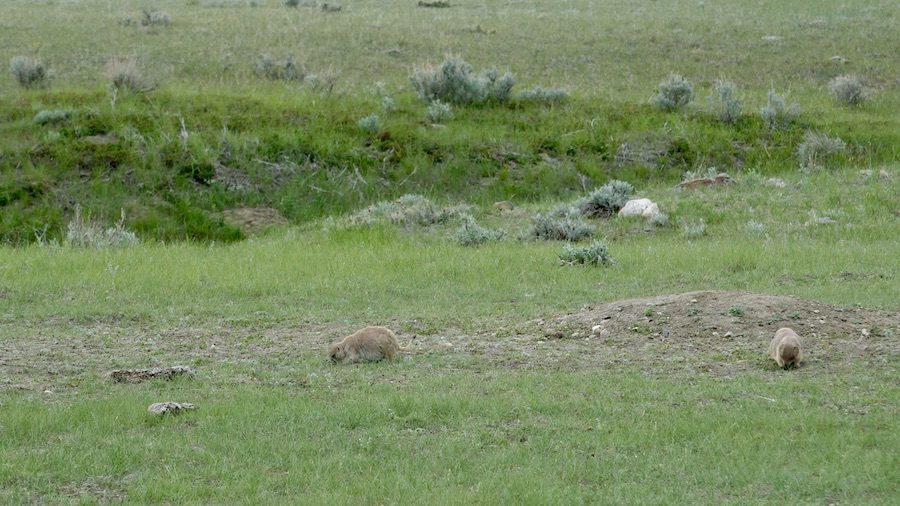
The young prairie dog pups that we watched would have been born underground in their borrows in April to mid May, after their parents mated underground in March to mid April. The pups then remain in their burrow for five to six weeks, before they appear above ground in June to July. Two to three weeks later, these pups become first time home owners, when their parents leave their burrows for them, and go and establish a new burrow.
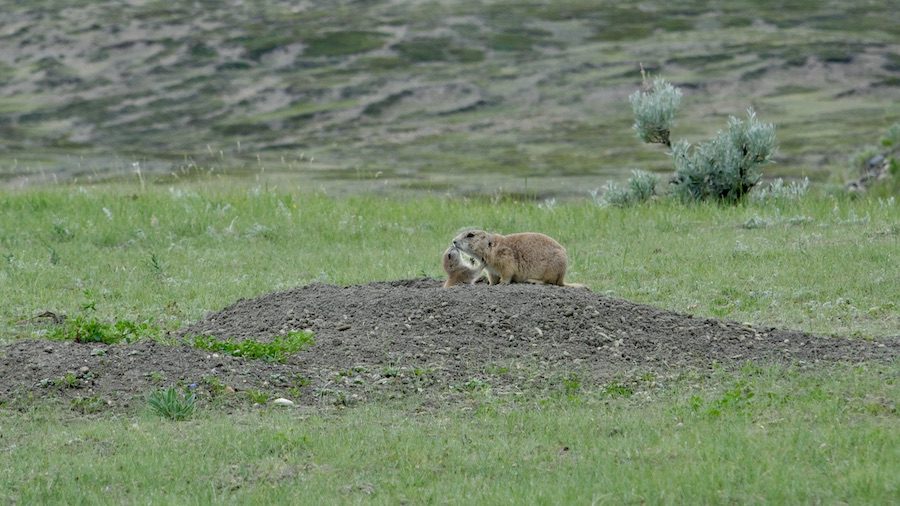
The pups will stay in their family’s colony of burrows for up to a year. This colony is known as a coterie and is comprised of one male, 3 to 4 females and their young. Members of the coterie identify each other by muzzling or ‘kissing’. They also communicate through grooming and play. When the time comes move out to establish a new colony, adults may travel 10 km or further, and swim across rivers and lakes. Usually, they will do this with members of the same coterie.
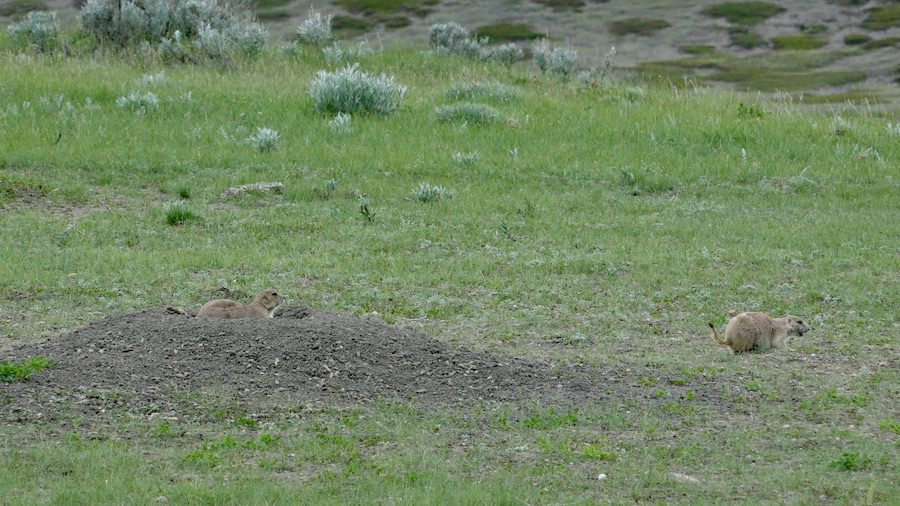
The complex system of underground burrow that the coteria establish are often called dog towns, with abandoned burrows being utilized by Burrowing Owls, Rattlesnakes, Short-Horned Lizards, and Black Widow Spiders. Rattlesnakes will also use the burrows to hunt for prairie dog pups. Other predators include badgers, eagles, hawks, coyotes, and fox.
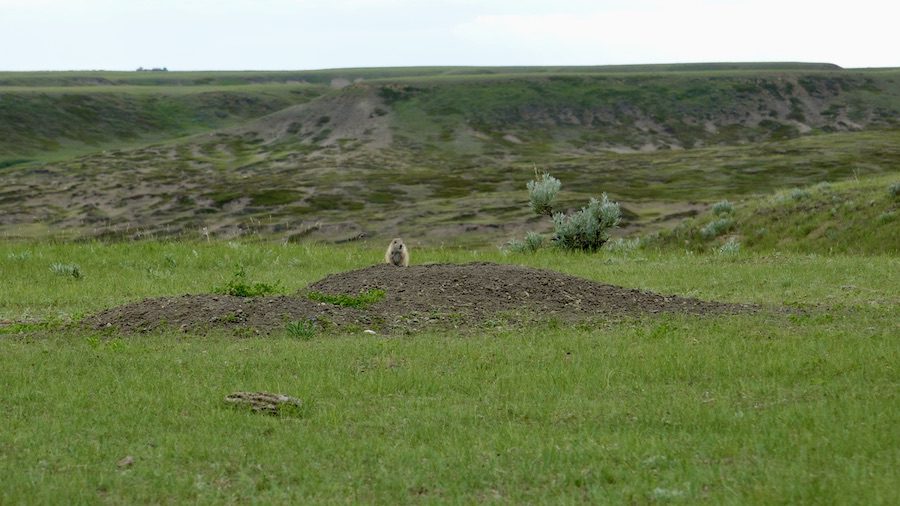
Humans perhaps have poised the greatest threat to prairies dogs. With some cattle farmers seeing prairie dogs as competing with cattle for food and being a danger to livestock, they have poisoned, trapped, shot, flooded and dynamited out of their homes. As would be expected, this has harmed other prairie fauna, including owls, ferrets, snakes, foxes and badgers.
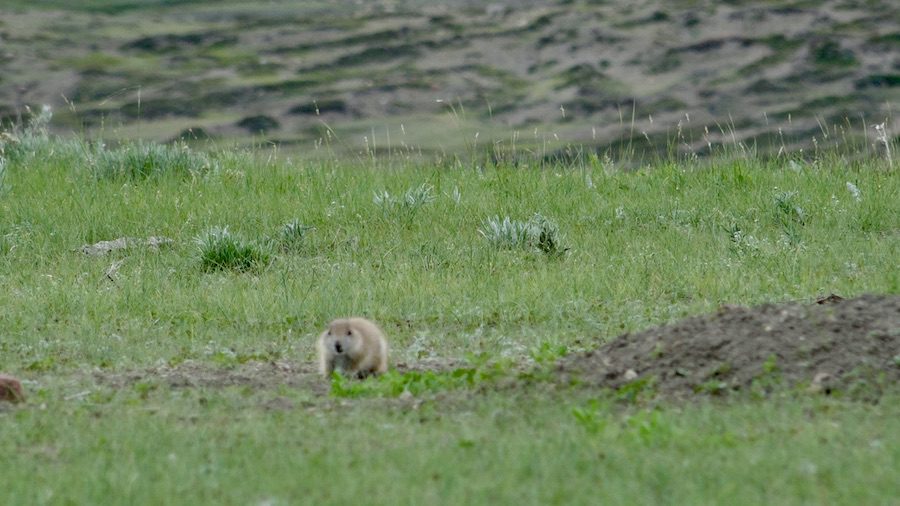
The Black-Tailed Prairie Dog met a further decline in Grasslands National Park between 2007 and 2013, due to a combination of factors including weather (drought), predation and disease (sylvatic plague). Thanks to Grasslands National Park conservation efforts, including plague mitigation, disease surveillance and habitat management, and research programs carried out by the Calgary’s Zoo Centre for Conservation Research and the University of Saskatchewan, prairie dog numbers in the Grasslands National Park have been steadily increasing.
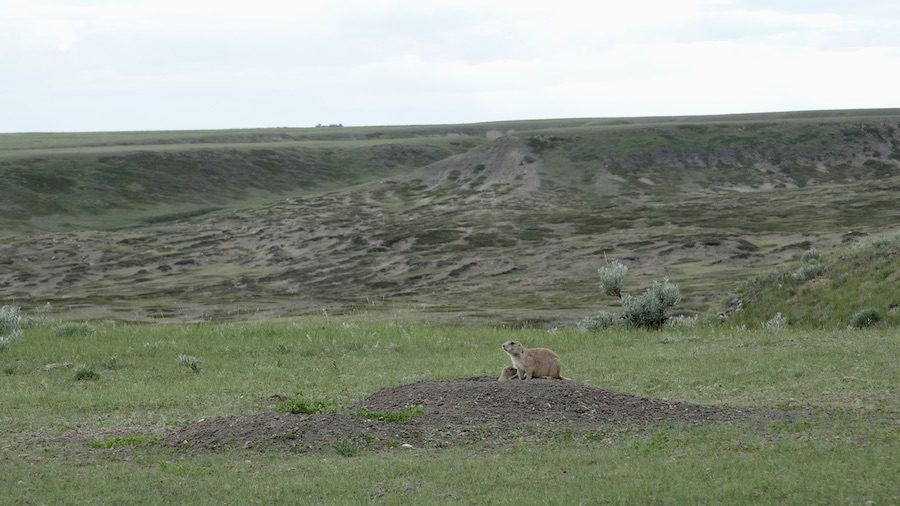
Playing a critical role in the health of the grasslands ecosystem as a keystone species, the future health and success of the Black-Tailed Prairie Dog also means the healthy habitats that the dog towns establish for Burrowing Owl, Short-Horned Lizard, the Prairie Rattlesnake and the Black-Footed Ferret, and prey that help in the survival of the Coyote, the Swift Fox, the Ferruginous Hawk and the Badger.
Park visitors can walk in amongst the coterie and dog towns by walking the Top Dogtown Trail, keeping on the look out for Burrowing Owls and Rattlesnakes in reclaimed abandoned burrows for a home, in addition to the antics of the Black-Footed Prairie Dogs. The telescopes at Stop 2 and Stop 7 on the West Block Ecotour Scenic Drive will also allow you to watch the Prairie Dogs from afar, minus their response to humans close by.
I myself could have spent hours just sitting there at the side of the road, enjoying being in the moment with my new found borrowing friends, but sunset was approaching. Being my first time in the park I was not sure how far we were from Frenchman Valley Campground or what to expect when we got there, so reluctantly we drove on, only to find that I wanted to stop every few yards as there was so much natural beauty to enjoy.
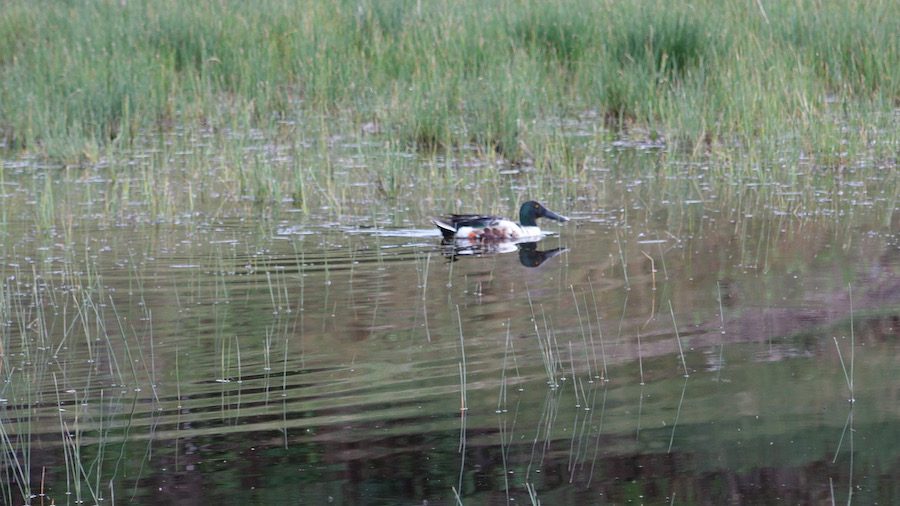
As the coyotes began to howl and Miss Ella the tortie terror made a quick retreat to the car, I decided it was time to get us settled at Frenchman Valley Campground for the night.
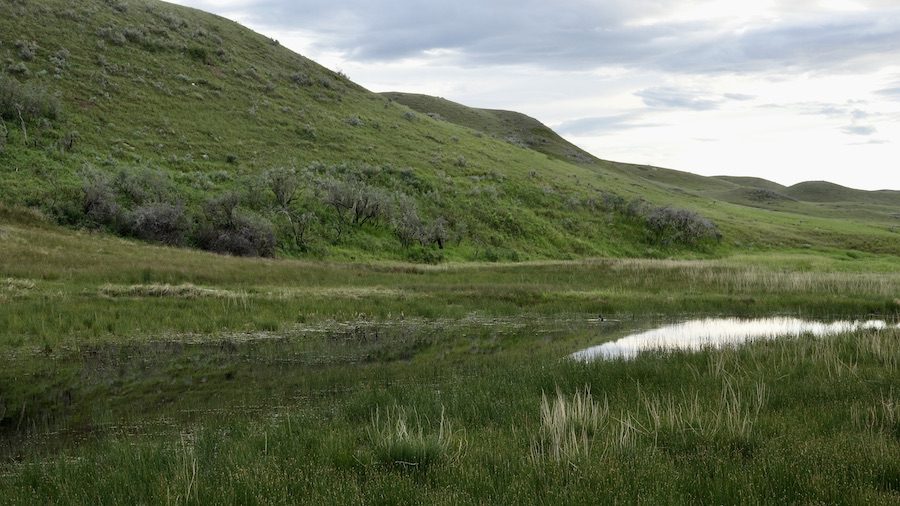
Frenchman Valley Campground
Grasslands National Park has two drive-in campgrounds, in addition to the backcountry camping and equestrian camping. One campground is in the East Block of the park – Rock Creek Campground, and one campground is in the West Block block of the park – Frenchman Valley Campground.
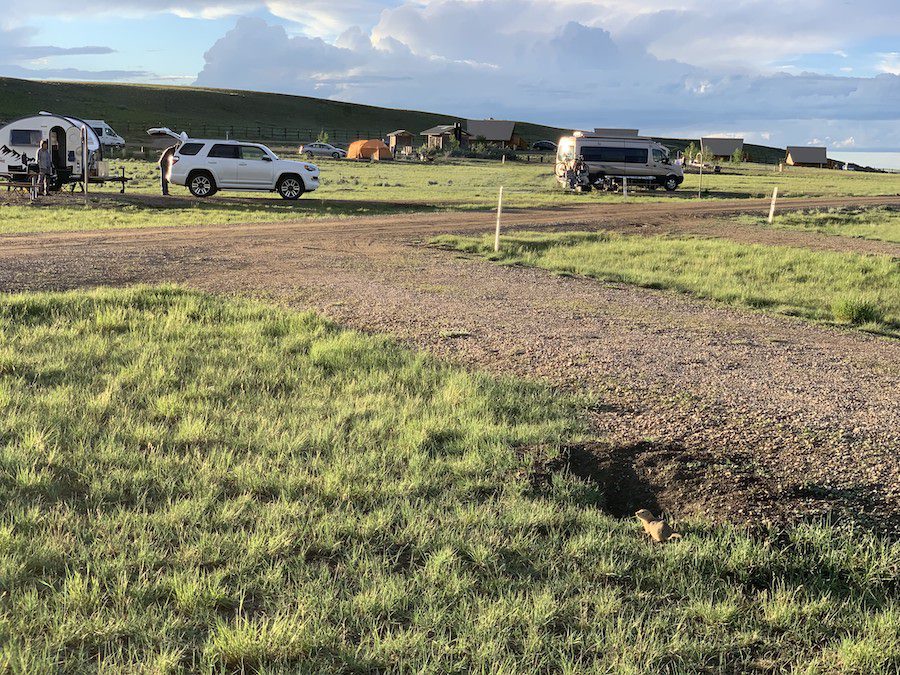
On this visit, we were exploring the West Block of the park so stayed at Frenchman Valley Campground, which is well provisioned with 20 electrical sites, 4 cabins (oTENTik units), fire pits, lantern hangers, picnic tables, easy access to vault toilets, and drinking water for small jugs; in addition to an overflow camping area.
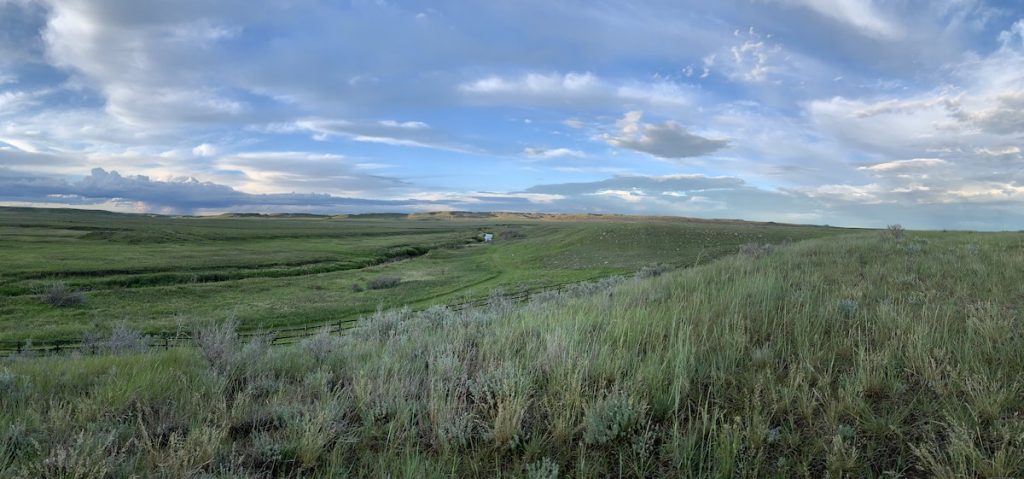
Ella and I pulled into the peaceful prairie setting of Frenchman Valley Campground just before sunset, so we grabbed our cameras and Nuu chah nulth drum, and wandered off to the viewpoint looking out over the Frenchman River and rolling hills of Grasslands National Park. I was secretly hoping to bison, which we were not so fortunate to see, but we were gifted with beautiful views, so spent the next couple of hours, wandering, taking photos, and playing our drum. As the coyotes began howling, we retreated back up the hill, as cat meets coyote was not the story I wished to end my day on, and then sat back at the crest of hill to enjoy a beer and watch a thunder and lightning storm brewing on the horizon.
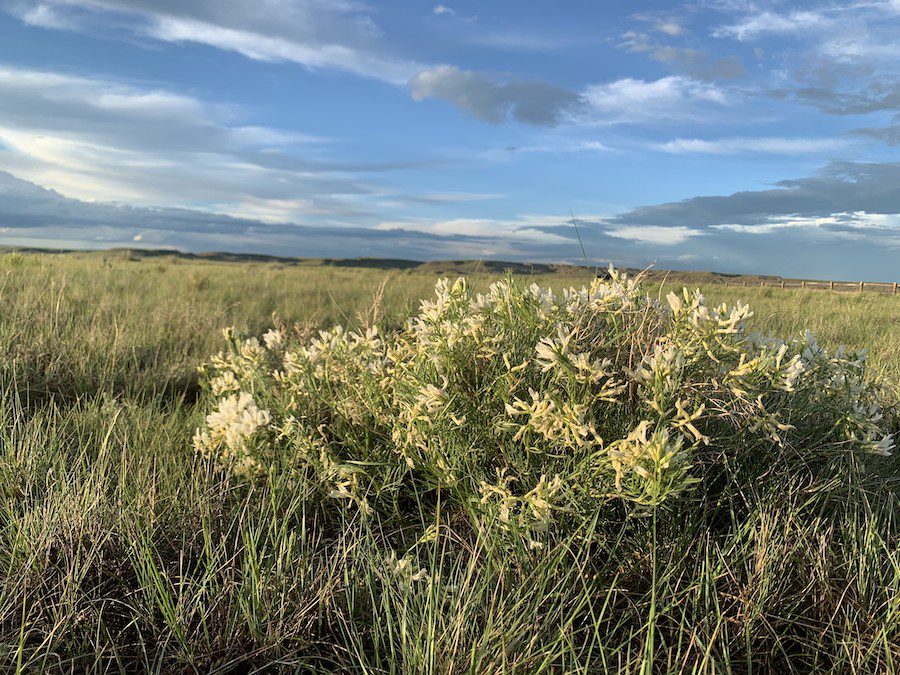

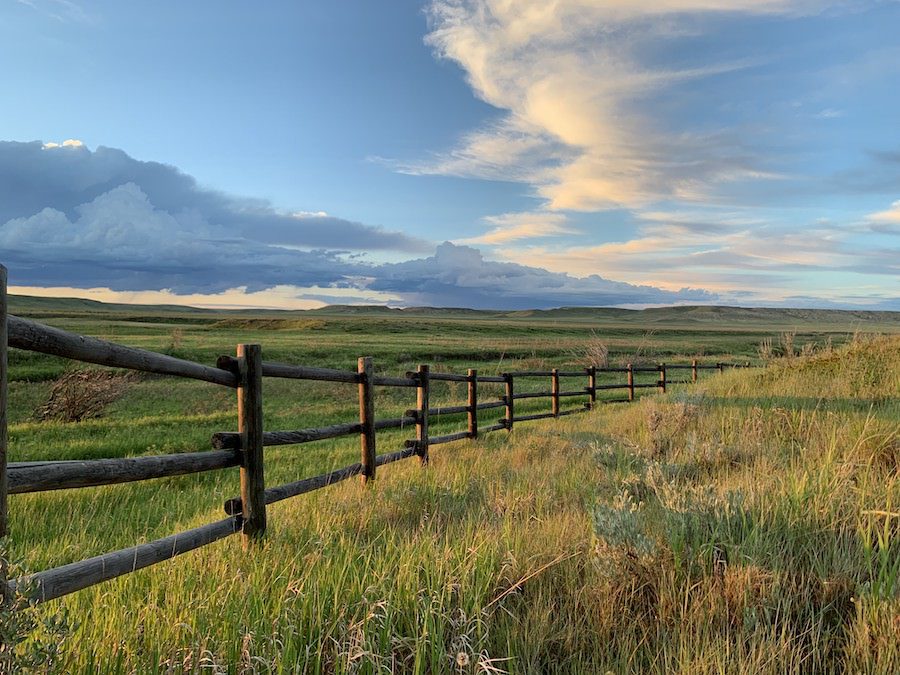
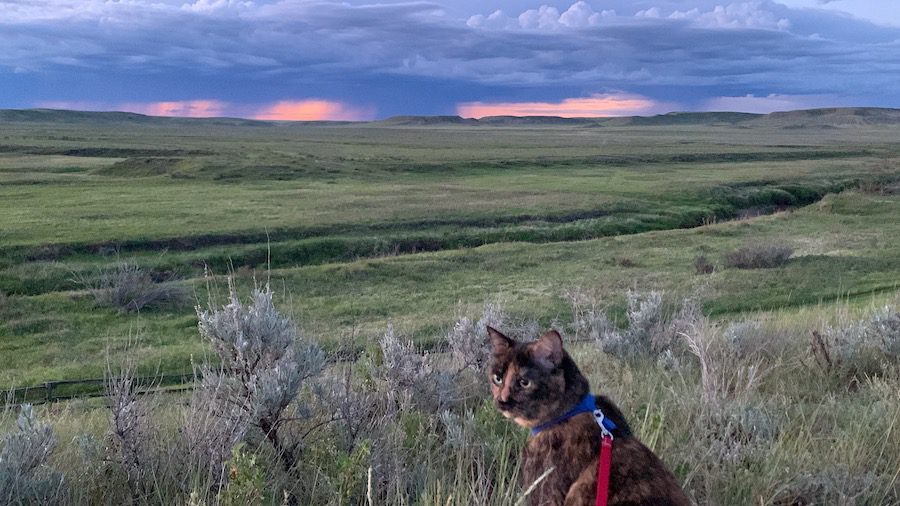
As we returned to our campsite, we enjoyed the campfire and conversation of our neighbours for the evening before Ella leaped up on the roof of our car to lie back and enjoy the night sky. She definitely had the right idea, in this dark sky preserve, so I sat on the car’s hood to join her, smiling with love as she slid down the car’s front window to snuggle up beside me. The perfect end to our first day in Grasslands National Park, surrounded by its wild beauty.

A Scenic Drive
I always love waking up in parks, and seeing all the natural beauty around me, which is exactly what Ella and I were met with that next morning. Oh how I wish we did not have to leave that day, but we did, so I was determined that I’d at least enjoy a decent day’s adventure before leaving.
For us that adventure was to be the West Block Ecotour Scenic Drive. What a gorgeous drive, with interesting interpretive stops along the way exploring the natural and cultural history, and hikes to suit varying abilities and desires. I was hoping to see Bison and Black-Footed Ferret, which we were not fortunate enough to see on this visit, although we did see signs of bison.
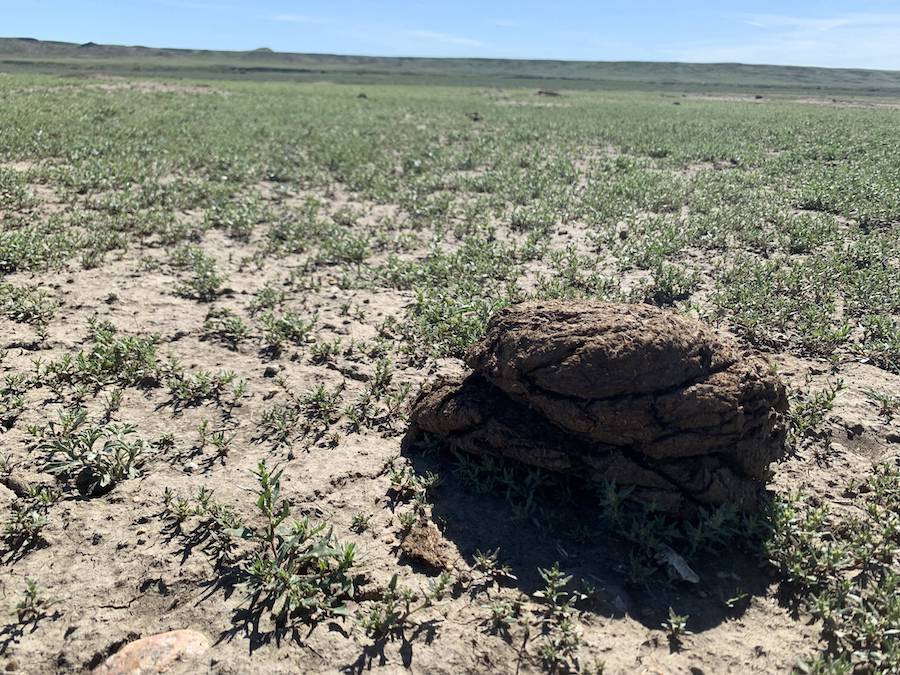
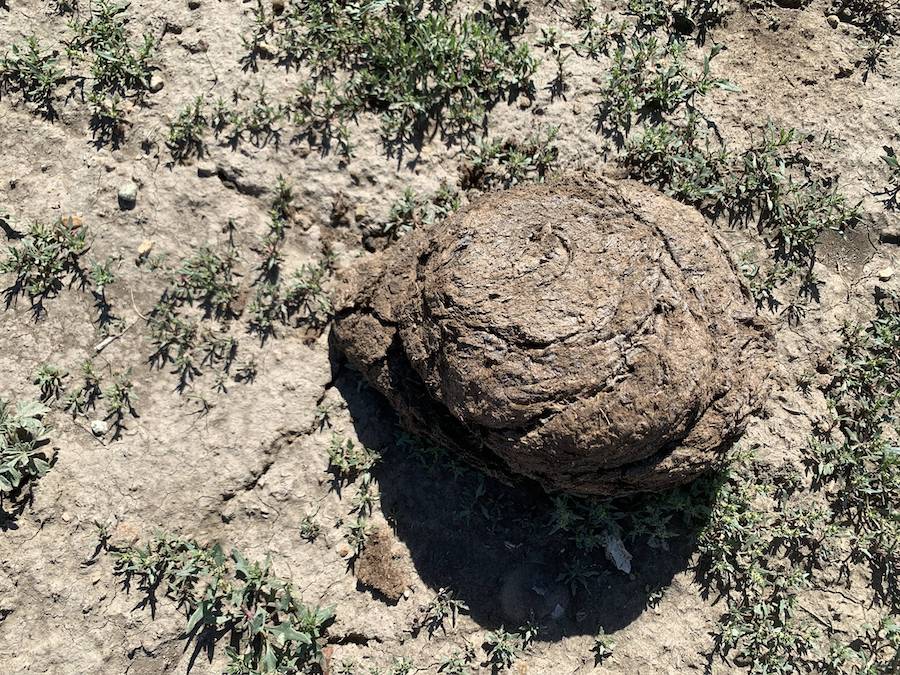
I did however delight in the antics of more Black-Tailed Prairie Dogs, watching Hawks soar on the breeze, and in finding ourselves amidst a few herds of cattle with their calves.
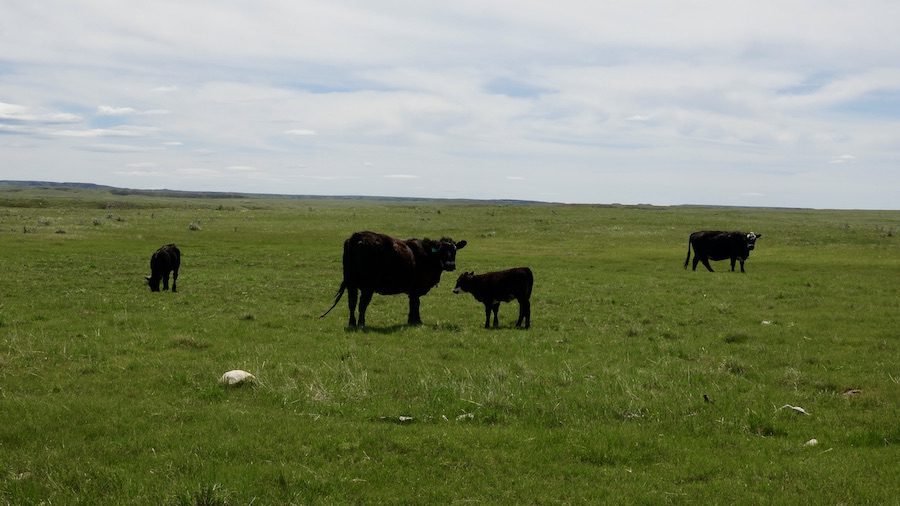
We even encountered one lone coyote, and watched it lope off into the horizon.

Further Adventures to Come
How I wished this day was longer, as there are so many adventures and so much exploring to be had in Grasslands National Park. Truth be told though, a could spent a week here and still just be beginning to uncover all the secrets that this park holds, and that’s just for the West Block of the park. There is the East Block of Grasslands National Park too with its badlands to explore and fossilised dinosaur bones.
Planning Your Trip to Grasslands National Park
A trip to Grasslands National Park does take a bit of conscious thought and planning, mainly because once you are in the park, you are going to want to stay and explore, not spend your time driving out to the nearest town (which at minimum is 20-minutes away, dependent on where in the park you are). More importantly though, this is rural Saskatchewan, meaning that there are minimal options for food and gas services, which run minimal hours, especially on Sundays, when you will find most things closed. Also in rural Saskatchewan you will find that many gas stations are only accessible with cardlock or credit card, and there are minimal electric vehicle charging stations. Grasslands National Park has 4 electric vehicle charging stations in total, located at the Visitor Centre in Val Marie, near the West Block of the Park. These are Tesla and Universal.
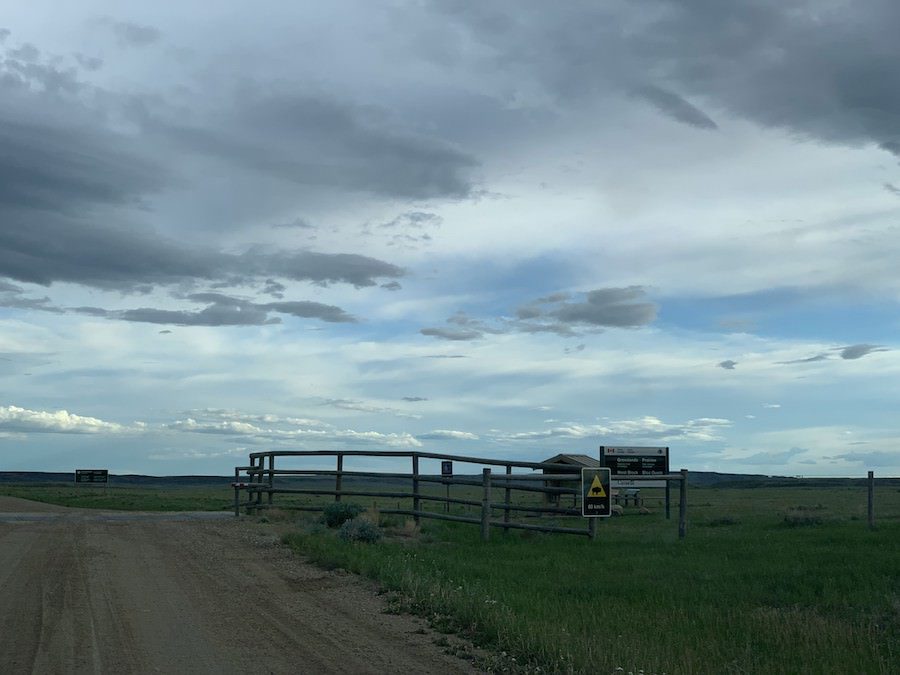
For those of you who don’t live in a rural area or who have not been a commercial driver, your credit card does not work at a cardlock station (trust me, I am the person that I am sure the locals were chuckling at, as they watched me try using my credit card over and over again in the cardlock pump). To use a cardlock pump, you need a special card from the co-op that manages that cardlock station.
What this means for you, is that you want to look up the gas and charging stations on your route into and out of the park. Which ones accept credit cards? What are their hours? If the station is closed, can you still access the pumps with your credit card? Fill up your tank at the last gas station that accepts credit cards going into the park, as you will want to take some scenic drives within the park, and if you decide to drive from Frenchman Campground to Rock Creek Campground, that is a 2 1/2 hour drive.
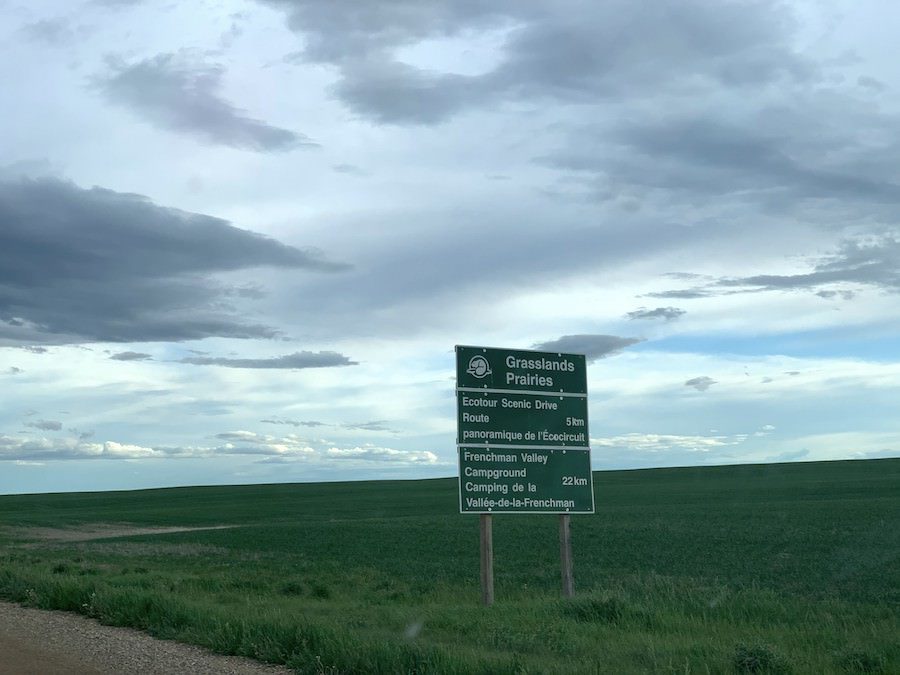
Other important items to plan for:
- All the roads in and out of Grassland’s National Park are gravel. Some of the gravel roads in rural Saskatchewan can act like black ice when wet or become impassible, so drive with care.
- Cellular Service is intermittent throughout Grasslands National Park and outlying areas, and the GPS directions are not reliable. So rather than end up in a similar situation to me on a Google Maps directed road trip through New Brunswick, plan your route in advance and bring a tangible paper map.
- Have a complete, fully provisioned first aid kit with you. The number for emergencies within the park is 1-877-852-3100.
- Take plenty of food and water with you. Drinking water is available at the campgrounds and visitor centre in Val Marie from May 1 to September 5. All surface water in the park is unfit for human consumption. Treating, filtering, or boiling the water will not help with the water salinity.
- Check the community facilities and services prior to your departure.
- Prepare for the weather, as there is little shelter within the park, as this is a Prairie ecosystem. In June, July, and August, temperatures will often reach 40 degrees Celsius with little to no shade. This means you will need at least 1 litre of water per hour of hiking.
- As with most Canadian parks, services within Grasslands National Park are seasonal. While the park itself is open year round, many of the staffed facilities are only open between May through to October.
- Bring ankle high boots for hiking, to protect your ankles, in case you startle a rattlesnake.
Don’t forget to get your Park Pass, and reserve your campsite, so as not to be disappointed.
Share Your Grasslands National Park Experience

Have you visited Grasslands National Park before? We’d love to hear about your experiences in the comments below.


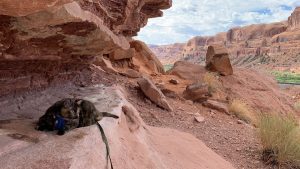
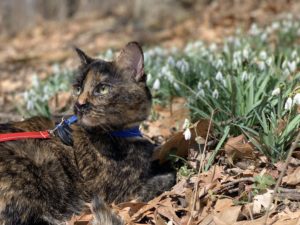
Leave a Reply